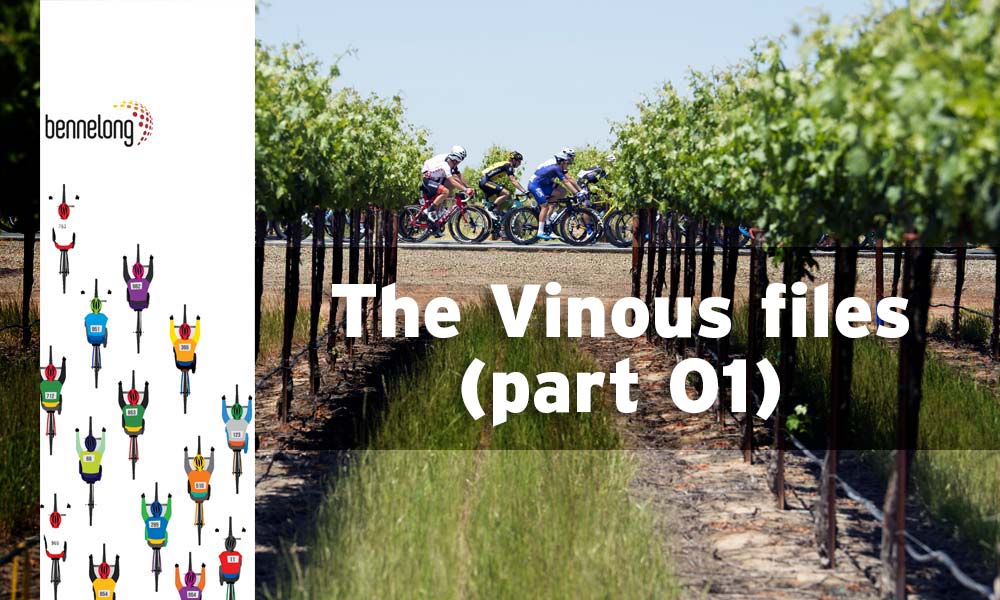[et_pb_section bb_built=”1″ admin_label=”section”][et_pb_row admin_label=”row” background_position=”top_left” background_repeat=”repeat” background_size=”initial”][et_pb_column type=”1_4″][et_pb_text use_border_color=”off” border_color=”#ffffff” border_style=”solid” _builder_version=”3.9″]
As we make our way from the Vendée to Paris over the next three weeks, wine maker and cycling enthusiast, Drew Tuckwell, will be providing some commentary about the specialities of the regions we visit during the Tour de France of 2018.
[/et_pb_text][/et_pb_column][et_pb_column type=”3_4″][et_pb_text use_border_color=”off” border_color=”#ffffff” border_style=”solid” _builder_version=”3.9″]
– By Drew Tuckwell, Wine Peloton
You can’t really escape vineyards in France. Apart from the far north and north-west, the vine seems to flourish in every corner of the country. Now, contrary to popular belief, not all French wine is great. There are greater and lesser regions, vine varieties and styles, but wine is such an intrinsic part of French life that, when the Tour de France rolls around every year, we all expect to see beautiful aerial pictures of idyllic vineyard landscapes.
There have been past editions where there has been very strong links between the Tour de France and French vineyards.
The 2010 edition was particularly notable for its 52km time trial of Stage, from the city of Bordeaux through the Medoc vineyards to the prestigious wine commune of Paulliac. Fabian Cancellara rode past some famous wine producers on his way to victory that day. Earlier that same year, Alessandro Petacchi out sprinted Mark Cavendish on stage four to win the in Champagne capital of Reims. And who could forget Robbie McEwen’s win in Reims in the 2002 Tour de France?
Undoubtedly, the peloton will be scooting past plenty of vineyards in the 2018 Tour de France but where exactly are they going? And which wines should we pull out of the cellar or pick up at the local bottle shop to sip as we watch this years’ race?
Truth been known, as the Tour starts in the north-west and immediately travels to the far north, there are pretty slim pickings in the first week.
The stage three teams time trial around Cholet is about as close as we get to finding anything in the bottle shop. To the north-west of Cholet, centered around the city of Nantes on the southern bank of the Loire River is Muscadet. Made from the Melon de Bourgogne grape, this is a zesty, fresh, aromatic white wine perfectly suited to the local seafood, especially shellfish. So get some fish and chips on the dinner table on Monday night.
To the north-east of Cholet is Anjou. Whilst there is quite a diversity of grape varieties grown in Anjou, the region is best known for its both its dry white wines and botrytis affected dessert wine made from Chenin Blanc.
Savennieres is particularly noted for its dry wines, biodynamic guru Nicolas Joly of Coulee de Serrant being the flag bearer for the region. Quarts de Charmes is the dessert wine to keep an eye out for and a little crème brulee for dessert.
The other Anjou wines you should not have any trouble finding is the dry rosé called Roséd’Anjou, typically made from Cabernet Franc and/or Cabernet Sauvignon. Without global warming it has been a bit of a tough ask to gets these varieties ripe enough to produce dry red wine. However, Roséd’Anjou can be lovely, crunchy, red fruited rosé.
Unfortunately, the TTT parcours is not likely to extend into the vineyard area of either of these regions but close enough is good enough in my mind.
From stage four until the first rest day you are going to have to settle for cider. Basically, it is too cold for the vine this far north but apples and pears thrive.
Whether the peloton is charging up the Mûr-de-Bretagne, splitting into echelons across the plain of Picardy or bouncing over the cobbles on the way to Roubaix, there is a multitude of apple or pears ciders to consider either from large commercial brands or artisanal small producers in still or sparkling styles. And if the weather is really bad on the road in France or outside your window on a cold winter’s night, there is always the bottle of the heady apple/pear brandy Calvados to warm the cockles.
– By Drew Tuckwell
[/et_pb_text][/et_pb_column][/et_pb_row][/et_pb_section]



